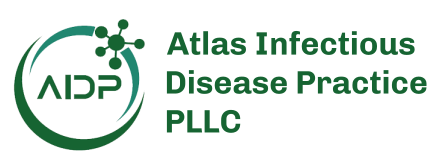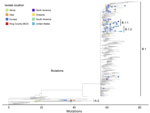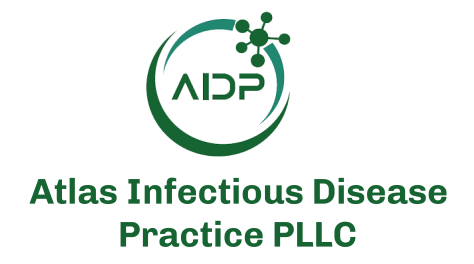Disclaimer: Early release articles are not considered as final versions. Any changes will be reflected in the online version in the month the article is officially released.
Author affiliation: Public Health–Seattle & King County, Seattle, Washington, USA (K.M. Lau, M. Banks, K. Bryant, J.D. Lambert, V. Kawakami, S. Pogosjans, E. Gonzales, E.J. Chow); Washington State Department of Health, Olympia, Washington, USA (L.M. Torres, S.M. Lunn, C. Yun, A. Black); University of Washington School of Medicine, Seattle (P. Roychoudhury, B.E. Nunley, J. Sereewit, A.L. Greninger, E.J. Chow); Fred Hutchinson Cancer Research Center, Seattle (P. Roychoudhury, A.L. Greninger); University of Washington School of Public Health, Seattle (E.J. Chow)
When global spread of mpox began in 2022 (1), whole-genome sequencing (WGS) of monkeypox virus offered a potential new tool to complement traditional epidemiologic investigative approaches to identify epidemiologic linkages. Public Health–Seattle & King County (PHSKC), Washington State Department of Health (WADOH), and the University of Washington Virology Laboratory (UW Virology) collaborated to pilot an mpox genomic surveillance program in King County, Washington, USA. In fall 2023, PHSKC used retrospective data from the pilot and real-time WGS to support investigation of a case of mpox associated with international travel.
Data were collected as part of routine public health surveillance and are considered nonresearch. Patient consent was not required, but verbal consent was obtained from the patient whose case is described, and all identifying details of the patient have been removed in accordance with the institutional policy of PHSKC.
From May 2022 through June 2024, PHSKC collected epidemiologic data using case interviews and chart reviews for every reported case of mpox. During the same period, UW Virology attempted real-time WGS on mpox-positive residual diagnostic specimens using a hybridization probe-capture–based approach, with probes designed using the MPXV 2022/MA001 strain as described previously (3). We generated consensus genomes using a custom Nextflow pipeline (https://github.com/greninger-lab/nf_mpxv_f13l).
As part of a pilot project in September 2022, WADOH and PHSKC retrospectively linked all WGS and epidemiologic data for cases of mpox occurring since May 2022 in King County. WADOH built a focused phylogenetic tree of all local cases and contextual sequences from other regions (https://nextstrain.org/groups/waphl/wa/hmpxv1), PHSKC annotated the tree with epidemiologic data, and WADOH and PHSKC conducted joint analysis (4). From September 2022 on, PHSKC actively pursued WGS of all new mpox cases, linked WGS results to epidemiologic data, and analyzed phylogenetic relatedness of cases during investigations using Nextstrain and NextClade (https://clades.nextstrain.org) (5).
The pilot retrospective analysis linked WGS results to 126 mpox cases that occurred during May–September 2022 (29.6% of 426 total cases during the pilot period). The analysis established baseline understanding of local genomic diversity; all available Washington isolates from the pilot were identified as clade IIb, lineage B.1.
In fall 2023, an adult, cisgender man residing in King County, Washington, had mpox symptoms develop 2 days after a 5-day trip to Kenya with an overnight layover in United Arab Emirates (UAE). Symptoms began with small, blister-like penile lesions. Five days after lesions appeared, the man developed headache, groin pain, fatigue, and subjective fever. Eight days after symptom onset, healthcare professionals collected a lesion specimen, which tested positive for mpox by real-time PCR. The man completed a prescribed course of oral tecovirimat and reported fever and pain resolution 18 days after symptom onset and complete scab resolution 24 days after symptom onset. On the basis of symptom onset date and a typical incubation period of 3–17 days, the exposure period spanned dates when the man was in King County, Kenya, and the UAE (6). During case interviews, he reported having no exposure to anyone with known or suspected mpox and no sexual activity or close physical contact with anyone 3 weeks before symptom onset. According to interview alone, investigators remained uncertain where and when the man was likely exposed.
At the time of case investigation, 71 additional cases from Washington had been sequenced in real-time (37.4% of 190 cases since the pilot period), and all real-time sequenced cases were lineage B.1. WGS results for this case were shared with PHSKC 15 days after the case report, and the sequence was identified as clade IIb, sublineage A.2.1. The sequence was highly divergent from lineage B.1, showing ≈94 nt variations (Figure). No reports have identified sublineage A.2.1 in the western United States, and prior reports have noted only 1 instance of this sequence in North America (7,8). The high divergence from other Washington cases and the rarity of reported A.2 lineages in the United States strongly suggested that this case-patient’s exposure occurred during international travel. Reports of lineage A.2 in the UAE further suggested exposure was most likely in the UAE rather than in Kenya, but low sequencing coverage of mpox from both countries limits interpretation (9,10). By supporting a conclusion of likely international exposure, real-time sequencing helped reduce public health concern of unreported local cases and need for additional case finding efforts. The sequence for this isolate has been deposited into GenBank (accession no. OR455100.1).
Since this case occurred (fall 2023–July 2024), 37 more cases of mpox have been reported in King County, and 76% were sequenced (n = 28). All the subsequent sequences were identified as lineage B.1, suggesting no onward transmission of lineage A.2 locally.
This case illustrates the value of genomic surveillance in mpox public health response. No known exposures could be identified during case investigation through patient interview, but genomic surveillance helped public health staff determine that the likelihood that this case represented undetected local spread was low. Health officials were able to make this determination by proactively establishing baseline genomic diversity in the region and pursuing sequencing of all new cases of mpox. Impactful genomic surveillance required close collaboration across agencies to achieve timely sequencing and result interpretation. As use of pathogen sequencing expands, additional work should be conducted to anticipate potential ethical concerns and establish practices that protect privacy while advancing infectious disease prevention and response.
Ms. Lau works as an epidemiologist at Public Health–Seattle & King County in the Communicable Disease Epidemiology and Immunizations section and participates in the Northwest Pathogen Genomics Center of Excellence. Her work focuses on implementing pathogen genomics in local public health practice.







